Assignment:
1. A block initially at rest is given a quick push by a hand. The block slides across the floor, gradually slows down, and comes to rest.
a. In the spaces provided, draw and label separate free-body diagrams for the block at each of the three instants shown
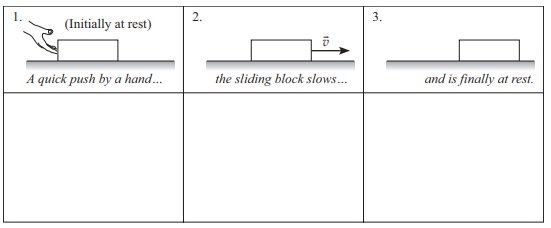
b. Rank the magnitudes of all the horizontal forces in the diagram for instant 1. Explain.
c. Are any of the forces that you drew for instant 1 missing from your diagram for instant 2? If so, for each force that is missing, explain how you knew to include the force on the first diagram but not on the second.
d. Are any of the forces that you drew for instant 1 missing from your diagram for instant 3? If so, for each force that is missing, explain how you knew to include the force on the first diagram but not on the third.
2. Two crates, A and B, are in an elevator as shown. The mass of crate A is greater than the mass of crate B.
a. The elevator moves downward at constant speed.
i. How does the acceleration of crate A compare to that of crate B? Explain.
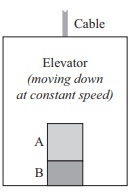
ii. In the spaces provided below, draw and label separate free-body diagrams for the crates.
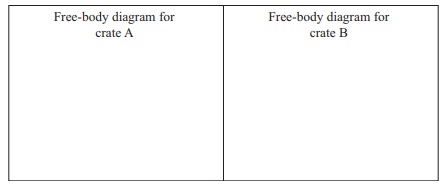
iii. Rank the forces on the crates according to magnitude, from largest to smallest. Explain your reasoning, including how you used Newton's second and third laws.
iv. In the spaces provided at right, draw arrows to indicate the direction of the net force on each crate. If the net force on either crate is zero, state so explicitly. Explain.
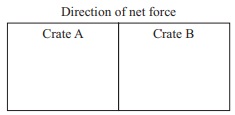
Is the magnitude of the net force on crate A greater than, less than, or equal to that on crate B? Explain.
b. As the elevator approaches its destination, its speed decreases. (It continues to move downward.)
i. How does the acceleration of crate A compare to that of crate B? Explain.
ii. In the spaces provided below, draw and label separate free-body diagrams for the crates in this case.
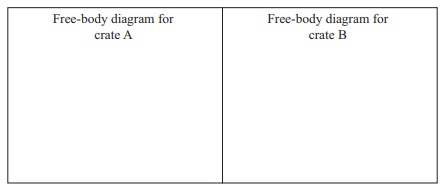
iii. Rank the forces on the crates according to magnitude, from largest to smallest. Explain your reasoning, including how you used Newton's second and third laws.
iv. In the spaces provided at right, draw arrows to indicate the direction of the net force on each crate. If the net force on either crate is zero, state so explicitly. Explain.
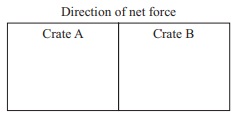
Is the magnitude of the net force on crate A greater than, less than, or equal to that on crate B? Explain.
3. A hand pushes three identical bricks as shown. The bricks are moving to the left and speeding up. System A consists of two bricks stacked together. System B consists of a single brick. System C consists of all three bricks. There is friction between the bricks and the table.

a. In the spaces provided at right, draw and label separate free-body diagrams for systems A and B.
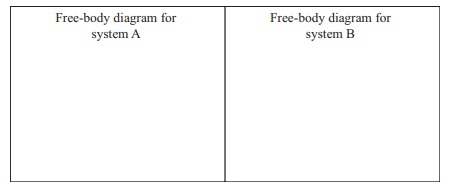
b. The vector representing the acceleration of system A is shown at right. Draw the acceleration vectors for systems B and C using the same scale. Explain
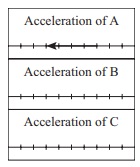
c. The vector representing the net force on system A is shown at right. Draw the net force vectors for systems B and C using the same scale. Explain.
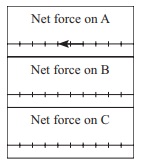
d. The vector representing the frictional force on system A is shown below. Draw the remaining force vectors using the same scale.

Explain how you knew to draw the force vectors as you did.